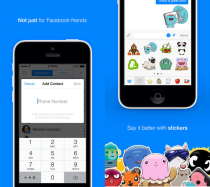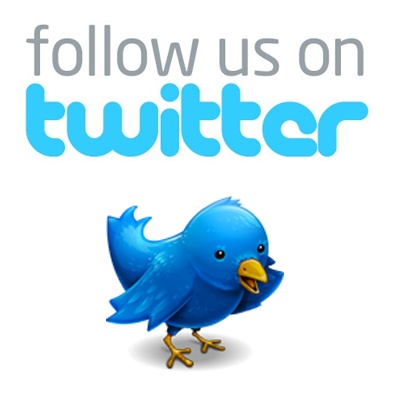Facebook Messenger Fights Chat Competitors By Bringing ‘Contact Via Phone Number’ To All

Facebook is continuing its assault on SMS and quest to become the only messaging app you use today by expanding its “contact via phone number” feature to Messenger for iOS. The option launched on Android to a select set of testers at the end of October, and is being pushed to all Androiders as well as all iOS users. The update is rolling out now and also brings a cleaner layout, and faster start-up and navigation.
The intent is clear. As I detailed last month, Facebook doesn’t want you to have to switch to SMS to contact someone who you have the phone number of but aren’t friends with. It’s watched as startup messaging apps like WeChat and KakaoTalk that rely on phone numbers rise to huge user counts. The move could box them out, if it’s not too late.
WeChat is thought to have over 200M users, while its Chinese parent company Tencent’s desktop messaging service QQ is said to over 800 million active users. WhatsApp is thought to have somewhere between 250 million and 350 million users, while KakaoTalk is said to have over 90 million. Then there’s sticker-messaging app Line, and Snapchat, which sees about as many daily photo uploads and which the Wall Street Journal today said refused a $3 billion acquisition offer from Facebook.
One reason the Asian messaging startups may be gaining ground is they’re getting users addicted to games. Several have their own internal gaming platforms that third-parties build titles for. Meanwhile, Facebook is pursuing a “social layer” strategy in mobile gaming, hoping to provide login and sharing options to native games rather than running the platform itself. That might not be forceful enough to keep users’ eyes glued while they wait for replies from friends.
Overall, this degree of fragmentation in the messaging market is dangerous for Facebook because it thrives on having all your friends in one place. Messaging generates a ton of user engagment and return visits, plus also helps companies build an accurate social graph of who you talk to most. That’s important data Facebook needs to refine its News Feed relevancy algorithm and ad targeting.
The option to contact someone via phone number within Messenger might dissuade people from using these other apps. It could be especially helpful to budget-minded folks who don’t want to rack up SMS costs. International travelers could benefit from avoiding SMS roaming charges.
At this point, it doesn’t look like Facebook will be able to beat all these messaging competitors. At best it can hope to stunt their growth and hold onto its existing users.
nuebbo.com: Online contacts management
 No matter what type of user you are, everyone has a long list of contacts which they need to manage and keep safe. Businesses need to store client information and teenagers love to keep their friends information for chatting and emailing. Local storage can be a pain when it comes to crashes and fried storage devices. This is the thinking behind new contact management startup nuebbo.com.
No matter what type of user you are, everyone has a long list of contacts which they need to manage and keep safe. Businesses need to store client information and teenagers love to keep their friends information for chatting and emailing. Local storage can be a pain when it comes to crashes and fried storage devices. This is the thinking behind new contact management startup nuebbo.com.
nuebbo.com provides online management and storage of contact in a neat and organized fashion. This information is organized in the form of virtual business cards. The process is automated and you just have to import your contact list and nuebbo.com will do the rest. The biggest advantage is mobility; no matter where you go, you will always have access to your contacts.
Some features like the preview of how the content would look like will certainly allow more users to sign up. Right now, the site is in beta and they are still lacking a preview and FAQ section for potential users.
Contact Us
If you want to submit your startup for review, click on the Submit A Startup link.
Are you a good Writer? Come Guest Post for The Wizz! Its is free!!! click on the
Wizz Guest Post link.
For anything else, contact us below.
[contact-form-7 id=”1616″ title=”Contact”]
Click Here!
Former YouTube star sentenced to ten years in prison for child porn
Former Youtube star Austin Jones has been sentenced to ten years in a US federal prison after pleading guilty to persuading underage girls to send him explicit videos of themselves.
Jones, who made a name for himself online singing covers of songs, was arrested and charged in 2017 with two counts of producing child pornography.
He later pled guilty to one charge of receiving child pornography — admitting in a plea agreement that in 2016 and 2017 he enticed six girls to to produce and send explicit videos to “prove” they were his “biggest fan”, per Buzzfeed.
“Production and receipt of child pornography are extraordinarily serious offenses that threaten the safety of our children and communities,” it quotes assistant U.S. Attorney Katherine Neff Welsh writing in a sentencing memo. “Jones’s actions took something from his victims and their families that they will never be able to get back.”
At the height of his YouTube fame Jones had around 540,000 subscribers to his channel and more than 20M video views.
In a 2015 apology vlog, after reports emerged of Jones asking young fans to send him twerking videos, he claimed it never went further than that. “There were never any nudes, never any physical contact, it never happened,” he said then.
But in his plea agreement Jones admitted to attempting to persuade more than thirty underage fans to send him explicit photos or videos.
YouTube removed Jones’ channel after he pled guilty in February — saying it had violated its community guidelines. But the Google -owned company initially refused to shutter it, telling the BBC a few days earlier that while it does have a policy of removing content when a person is convicted of a crime “in some cases” it does so only if the content is closely related to the crime committed.
Describing her experience in a vlog also posted to YouTube, one former fan she had received messages from Jones asking her for twerking videos prior to his 2015 apology video when she was 14-years-old.
“I just don’t understand how these people can let the fame get to their heads that much that they think it’s alright to do something to people like this,” she said. “It’s so messed up. But the fact that his fanbase was these vulnerable, insecure young girls makes it so much worse than it already is… He knew that that was his fanbase and he took advantage of that.”
NSA Denies Any Record Of Snowden Emailing Superiors About Concerns
 In response to a Freedom of Information Act (FOIA) query, the NSA today informed journalist Jason Leopold that it could not locate email pursuant to his request for “any and all emails written by former NSA contractor Edward Snowden in which Mr. Snowden contacted agency officials through email to raise concerns about NSA programs.” Read More
In response to a Freedom of Information Act (FOIA) query, the NSA today informed journalist Jason Leopold that it could not locate email pursuant to his request for “any and all emails written by former NSA contractor Edward Snowden in which Mr. Snowden contacted agency officials through email to raise concerns about NSA programs.” Read More
The No. 1 Recruiting Resource (Hint: It’s Right Under Your Nose)

TalentBin co-founder Pete Kazanjy recently detailed his favorite recruiting tactics.
It probably comes as no surprise that your next best hires will come from your extended network. But if you haven’t yet given a lot of thought as to how you’re going to methodically tap into those circles, take some advice from Pete Kazanjy.
Kazanjy co-founded TalentBin, a talent search engine that was recently acquired by Monster.com. In a recent post on First Round Review, Kazanjy goes into great detail about his personal step-by-step recruiting process. In short, he says it goes like this:
- Generate hundreds of leads through your staff.
- Reach out directly via email — and remember to follow up.
- Repeat again and again.
Kazanjy’s entire process is a lot more involved, and worth reading up on, but here are some key highlights.
Get Your Staff on Board
First, you need to ask your current staff for their help and their time. Since they’re providing you with an invaluable service, make sure a rewards system is in place. Kazanjy said a referral recruiting bonus — of at least $1,000 to $2,000 per hire — is a must.
Next, make sure they know exactly who you’re looking for before they comb through their network. Emphasize that you’re not just in search of candidates who are job hunting or might be soon — those aren’t the only kinds of people who could be persuaded to come join your company.
Instead, the only question they should have in their minds when considering an individual is, “Does this person meet our hiring standards?”
“All other information can be collected elsewhere, but this reputation data, validated by a trusted source you have in-house, is not available anywhere else. That’s the most valuable piece of this entire process,” Kazanjy said.
Mine Away
Next, work with each of your employees for about 30 minutes as they mine their LinkedIn account. This will generate a long list, so capture all of the data in a Google spreadsheet. For efficiency’s sake, just keep a running list of LinkedIn profile links. You can go back and populate more detailed fields like “name” and “contact information” later.
You do want to record any side comments that your employees make about an individual. For example, “That guy is great, and we’d be lucky to get him.” Add it to the notes column. Then when you’re done with LinkedIn, go through the same process on Facebook.
“Why Facebook, you ask? Aren’t LinkedIn connections the ‘professional’ connections you’re looking for? Yeah, kinda. But people suck at documenting their full social graphs on LinkedIn,” Kazanjy said. Think of all of the talented people your employees have met within the past few years who they haven’t bothered to connect with on LinkedIn.
Say Hello
When it comes time to actively reach out to people, the lead list might be 250 rows long. The best way to tackle it is to write emails as quickly as possible using a template. Make sure to emphasize to the recipients they came highly recommended by your employee.
Chances are that many won’t respond, so be sure to follow up. If they do respond, you should reply in one of two ways based on the way that they answered:
1. They’re interested. Send over some fun screening questions. “If they make the effort to answer them, you know they are serious about looking. This is also a lower barrier to entry than an immediate phone screen or interview,” Kazanjy said.
2. They’re not interested. Ask if they’ll pass along the jobs details to their friends. “You want your information driven along the referral path to their similarly high-quality friends,” Kazanjy pointed out.
Time consuming? Yes. Worth it? Definitely. “For every new hire that you get out of this system, they bring about 500 new contacts to the table that you can mine and recruit from, too,” Kazanjy said. “It’s the gift that keeps giving.”
![]()
The Easiest Way to Find Your Next Customer

Chances are, your next business opportunity is already waiting for you. You’re just not looking in the right place.
I received an email this past weekend from a reader of my column that included the following:
“I am aware that I will probably not get a response due to your busy schedule and workload, but I thought it might not hurt to try.”
It is a shame that this person’s first thought is that I wouldn’t think he was worth the time to warrant my response. As our connections with each other grow more “virtual,” it’s easy to overlook (or ignore) an email from a stranger or an introduction made by someone you know to someone new.
But isn’t that the point to sharing so much information with each other? To find new customers and make new connections?
In fact, I submit that your next customer may have already emailed you.
I have always looked at it this way: If someone takes the time to sit down and write me an email to ask me a question or make an introduction, I will always respond. Always.
I am not suggesting that you respond to every sales solicitation you receive, but if you know that another person took the time to reach out to you for advice or to make a connection, my advice and experience has been that you should always follow up. In fact, some of my best business and awareness opportunities have resulted from random connections made this way.
The biggest hurdle I hear from fellow entrepreneurs is simply remembering to follow up. Here are some tips I use to be successful:
Use a Tickler
It is very easy to mark an email for follow up. Almost every email system allows you to “flag” a specific message. You can then sort your inbox by that flag.
I love the arrow that Apple Mail automatically adds to my emails once I respond. I can quickly review the past 24 hours of mail I have received and determine if there is anyone that I have missed by keying in on the reply flag.
Establish Accountability
I have a virtual assistant who does three things for me. She helps me manage my calendar, books my travel, and she is copied on every e-mail I receive into my public inboxes.
By providing her with this e-mail access, she helps me keep of a list of individuals I am supposed to reach out to or might have missed. I simply BCC her on any response and she then knows that she can take them off her watch list. Once or twice a week I receive a list of individuals from her that I might have missed.
Manage Your Contact Channels
You should close or redirect others from any channels you are not actively using. If you don’t use a channel, simply put the best way to contact you in your profile information.
I am amazed at the number of people who don’t check their LinkedIn inboxes regularly or have their LinkedIn inbox forwarded to their regular email. The primary purpose of LinkedIn is to make and foster connections with others.
Many of the contacts I receive are through my about.me page. If that page didn’t provide an easy way to get in touch with me, I would have missed out on countless opportunities to weigh in on a breaking story for a journalist with a deadline.
The most important reason to perfect the follow-up? The opportunity to secure your next customer, best partner, or critical business contact may very well be sitting in the emails and social media messages you have been ignoring.
![]()
The Powerful Tool Most People Forget When Pitching
When you have just a few minutes to make a pitch, you don’t want to waste a second. This technique will let you stand out from the crowd.
A couple of weeks ago, I spent an afternoon at the National Publicity Summit, an event where people with books and projects to promote get a few minutes each to pitch journalists one-on-one. I went in part because they offered to support the Writers Emergency Assistance Fund in exchange, but mostly out of curiosity. For years, ASJA has had a similar event in which writers pitch editors, agents, and other clients. I wanted to see what it was like on the receiving end of the pitches.
It was an educational afternoon. I learned that being on the receiving end of a pitching event is much less nerve-racking but much more wearing than being the one doing the pitches because no sooner is one brief pitching session finished than someone arrives for the next one. I met about 40 people, some of them authors with interesting concepts that I was happy to hear about. But to my surprise, almost no one who pitched me used what I’ve found to be the most powerful tool in these settings.
That tool is asking questions.
Each of the people who pitched gave a description of their product or concept, and why they thought it would appeal to the readership of this column and then waited to hear what I thought about it. None of them asked what kinds of stories I was looking for, or what kinds of topics appealed most to my readers.
Admittedly, they had only a very short time (less than three minutes!) to sell me on their ideas and I’m sure they thought there wasn’t much time for back-and-forth. But even in the shortest of pitch sessions, asking questions is a powerful and smart thing to do. Here’s why:
1. You’ll break the pattern of endless pitching.
A rhythm develops where someone steps or sits in front of you and launches right into a spiel. Pausing to ask a question or two breaks that pattern in a good way and gives the person you’re pitching a short breather from the onslaught of sales pitches. And since so few people think to ask questions in this setting, your pitch session is likely to stick in your prospect’s memory.
2. You’ll engage your potential customer.
“The sexiest sentence in the world is: ‘Talk to me.'” A colleague of mine with a very successful track record from pitching events told me this once, and it’s really stuck with me. Asking people what they want shows that you care about what they want. And most people are more open to transacting when they feel cared about.
3. You can better match their needs.
Years ago, I met with an editor from CreditCards.com at a pitching event. I had a set of pitches about the credit card industry all ready to go, but early in the conversation, I asked the editor what she was looking for. The answer surprised me: off-beat and unusual topics.
I didn’t have one of those prepared, but I had recently been given a debit card that my bank printed while I waited and that had no raised letters or numbers. I pulled it out of my handbag and showed it to her, asking if she’d be interested in a piece on these weird flat debit cards. She was, and they’ve been a regular client ever since. If I hadn’t asked, I wouldn’t have known to pitch that topic and might never have landed that first assignment.
4. You won’t seem in a rush to make a sale.
Veterans of pitching events all know it’s extremely rare for a deal to be completed in a meeting just a few minutes long. Your objective should be to make a connection, one you can follow up later on outside of the hullabaloo of a pitching event. Asking questions signals your intention is to build that relationship rather than just make a quick deal.
5. You’ll be better able to continue the conversation.
If all you’ve done is pitch your product or idea, then the only follow-up you’re able to send is more information and/or a written sales pitch for that same product or company. Asking questions opens up many new possibilities. If you learn, for instance, that the person you’re pitching is interested in some newly released technology, you might send an article on the topic with a note reminding your contact of your meeting. Building that kind of relationship puts you in much better shape to make an eventual sale.
6. You’ll gain a competitive edge.
Looking for a way to stand out from the crowd? Many people making pitches try to make an impression with a little schwag or a slickly produced piece of literature. I like schwag as much as the next person but to be honest, asking questions and getting to know what a prospect really wants will make you stand out much more in that person’s mind than a gift of the latest cute gadget. Especially since no one else is doing it.
7. You’ll make it about them, not you.
This is the most important reason to ask questions during a pitching session. You came to the event with one goal in mind–to sell your product or gain investment for your company. But the person sitting across from you has his or her own agenda, which may involve buying products or making investments, but is certainly not the same as yours. Asking questions lets you quickly focus your interaction on fulfilling their needs, not yours.
And that’s the quickest way to make a sale.
Like this post? Sign up here for Minda’s weekly email and you’ll never miss her columns. Next time: How ping-pong can help you make better hires.
![]()
How to Network Like You Really Mean It

Stop treating your schmoozing like a business card collection contest. Start over with a new goal: quality always trumps quantity.
On my desk is a decorative box that’s full to the top with business cards. I’ve collected them at casual encounters, ASJA conferences, and speaking engagements over the past several months. I have a business card scanner, mobile business card application, and a human assistant, any of which could help me get those names into my contacts list. I haven’t bothered because, deep down, I know most or all will come to nothing.
So I was more than intrigued to discover that consultant and author Andrew Sobel recommends in his new book “Power Relationships” that the best place for all those cards might be the circular file. His thesis is simple: When it comes to networking, quality trumps quantity.
“There is a penchant to meet lots and lots of people,” he says. “It’s fueled a bit by social media, where we’re told we need large numbers of Twitter followers, followers of our blogs, LinkedIn connections and Facebook friends.” In fact, he says, there are only a few professions where knowing many, many people in a superficial way can be an advantage. “Maybe if you’re promoting a nightclub,” he says.
For just about everyone else, he says, it’s a different story. After interviewing hundreds of successful executives he found that most could identify 25 or perhaps 30 relationships that had made all the difference to their careers. And they recognized those key relationships right from the start.
That’s led Sobel to recommend a different, and likely more effective approach to networking:
1. Figure out who matters most.
This group is what Sobel calls the “critical few.” Whether a co-worker, customer, mentor, or someone who’s helped you make valuable connections, these are the contacts whose presence in your life is clearly valuable to your career. “If I asked you to make a list of the 20 most important professional contacts in your life right now,” he says. “It’s those people.”
Once you’ve identified your critical few, make sure to keep regular contact, he advises. “These aren’t people you should just send a holiday card to,” he says. “You should be talking two or three times a year. You should know what their interests are and follow up with them around those.”
2. Pick your next tier.
This group might be 50 to 100 contacts, Sobel says. These are people who have perhaps helped you or have the potential to do so in the future, contacts you may not know well enough to socialize with. “I don’t follow up with them with the same intensity,” he says. “I make sure I’m sending my monthly newsletter, but I may also send some other things of interest. For instance, when I’m quoted in Inc.com, I may send a link to that.”
3. Find easy ways to engage everyone else.
In Sobel’s case, “everyone else” is about 10,000 people. He sends them his monthly newsletter, and at the end of the year, also provides an instructional video just for them.
4. If you want to connect with someone, find a way to help that person.
It’s easy to assume that a wealthy and successful contact already has everything he or she desires and wants nothing from the likes of you. If you’re thinking that way, get over it, Sobel advises.
It’s always worth the trouble to find out a contact’s desires and concerns. The chances are high that you’ll be able to find something worthwhile you can offer. At one event, he recalls, he was introduced to a former CEO of Walmart, which he wasn’t expecting. Left alone to chat, he soon learned that one of the CEO’s family members suffered from a certain medical condition. Sobel’s brother is an expert in this condition and was able to suggest some useful articles that he sent on to the Walmart CEO.
5. Be intriguing.
If you want to make a connection with a new contact, especially a very busy one, the quickest way is to arouse that person’s curiosity with something unexpected. Sobel saw this demonstrated years ago when a friend of his met with an executive of a large telecommunications company. At the time, re-engineering was all the rage and that’s what Sobel’s friend had come to sell. But the telecom executive cut him off before he began, saying that the company had already engaged a high-profile firm and had its re-engineering well in hand.
Sobel’s friend was quiet for a moment and then remarked, “We used to do re-engineering.”
“The guy got upset,” Sobel says with a chuckle. “It’s good to get people emotionally engaged.” The executive was now very much listening to whatever Sobel’s friend had to say.
6. Think people, not positions.
“Everyone reading this knows people who are smart, ambitious, motivated, and interesting,” Sobel says. “Some of those people, in eight or 10 years, are going to be influencers. They may even be CEOs.”
It’s a lot easier to get to know someone and form a connection early in that person’s career, he explains. “It’s not that easy to break into the inner circle of 50- or 60-year-old executives. It’s a lot easier to build up that equity early. So think about who in your network seems to be going places and is really interesting and make a strong connection. Even if they don’t become an influencer, it’ll be an interesting relationship.”
7. Give before you ask.
Recently, Sobel got a lengthy email from a business school classmate. “I hadn’t heard from him in 30 years,” he says. The email was a request that Sobel invest in a new venture–in fact, the entire business plan was contained in the body of the email. “He did not maintain a relationship with me, and he didn’t evoke my curiosity,” Sobel notes. “I think he failed in all his attempts to raise money.”
Worst of all, the contact had committed the sin of asking for something without giving or offering anything, or even demonstrating any caring for Sobel at all. “Before you ask for something, make sure you’ve invested in that person,” he says.
8. Be generous.
That doesn’t mean you should only reach out to contacts or do things for them when you expect something in return. “You can’t operate with the thought of reciprocity in mind,” Sobel cautions. “If you go around with that mercenary attitude it will show, and people will think you’re a self-interested schmuck.”
Instead, he says, “You have to have a generous spirit. The greatest networkers I know genuinely like to help others. They’re always doing it. And if they ever do need anything, people will fall over themselves to help them.”
Like this post? Sign up here for Minda’s weekly email and you’ll never miss her columns. Next time: How to write job ads top candidates can’t resist.
![]()
Get the Heck Out of the Building, Founder’s School: Part 2

The Kauffman Foundation, a nonprofit dedicated to entrepreneurship, recently launched an educational video series for startup founders. Here is part two of the series.
With a ~$2 billion endowment the Kauffman Foundation is the largest non-profit focused on entrepreneurship in the world. The giving away of $80 million every year (with about $25 million going toward entrepreneurial causes) makes Kauffman the dominant player in the entrepreneurship space.
Kauffman launched Founders School, a new education series to help entrepreneurs develop their businesses during the startup stage by highlighting how startups are different from big companies and in January 2014 Part 1 of the “Startups” section of Founders School went online.
Now you can watch Part 2 “The Lean Approach“.
This group of six videos provides an overview of how to successfully do Customer Discovery. You’ll learn how to:
- Get to know your customers
- Devise ways to test your hypotheses
- Glean insights from what you learn outside the building
- Get, keep and grow customers
As in the first part of this series, I’m in good company–I’m joined in Founders School by Noam Wasserman of Harvard teaching Founder’s Dilemmas, Craig Wortmann University of Chicago covering Entrepreneurial Selling, Peter McDermott helping understand Intellectual Property and Nathan Gold offering how to give Powerful Presentations.
These videos are not only great tutorials for founders but also provide educators with another source of well produced, curated resources.
These “Startup” and “The Lean Approach” videos are a great general purpose companion to my “How to Build a Startup” lectures on Udacity.
And you get a tour of my living room and office…
Introduction, for Part 2 is here
Module 1, The Lean Method
- 0:50: There are No Facts Inside Your Building–Get Outside
- 1:28: Using the Business Model Canvas
- 1:49: Use Customer Development to Test Your Hypotheses
- 2:44: What is a Pivot?
- 4:24: No Business Plan Survives First Contact with Customers
Module 2, Getting Out of the Building: Customer Development
- 0:24: What is Customer Development?
- 1:09: How Do You Start the Customer Development Process?
- 1:36: Customer Discovery is a Series of Conversations
- 2:05: The Founder and Customer Development
- 3:16: Real World Example of Customer Development
Module 3, Customer Development Data
- 0:31: Designing Experiments to Test Hypotheses
- 0:48: Doing Customer Discovery Without Collecting Data is a Sin
- 1:06: Insight is Key
- 1:49: Why Accountants Don’t Run Startups
Module 4, Minimum Viable Products
- 0:18: What is a Minimum Viable Product?
- 0:38: What to Test, Why to Test and How to Test
- 2:05: You’re Not Building a Product … You’re Getting Customer Feedback
- 2:53: Use MVPs to Run Experiments
- 4:15: Real World Example of an MVP
Module 5, Customer Acquisition and Archetypes
- 0:47: Get, Keep and Grow Customers
- 1:00: Create Customer Demand
- 1:46: Customer Archetypes: Getting to Know Your Customers
- 3:35: Matching Archetypes to Acquisition
- 5:28: Growing Customers: The Lifetime Value
- 7:35: The Biggest Mistake in Customer Acquisition
![]()












Socially!